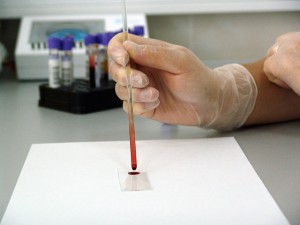A leader in genetic sequencing is betting that it can detect cancer at its earliest stages on the basis of minuscule amounts of genetic material circulating in a person’s bloodstream. But specialists warn that there are many technical hurdles to such an application.
Illumina, a leader in genetic sequencing has recently announced that it has formed a venture that will use genetic-sequencing technology to detect cancer through a simple blood test. Based on biomarkers detection, this technology will identify tumour-specific DNA or RNA in the blood before a person has begun to show symptoms. 
Illumina estimates that the market for a cancer-screening test performed once a year on healthy adults could be worth $20 billion to $100 billion.
However, since non-invasive prenatal screening has been a huge success it is a matter of time, when this can be expected in cancer diagnostics as well. The global market for non-invasive prenatal screening is estimated to be more than $500 million, and it is growing rapidly. Illumina estimates that the market for a cancer-screening test performed once a year on healthy adults could be worth $20 billion to $100 billion, depending on how well it works. The company aims to market a test by 2019 that would check for many types of tumours. But in order to reach that goal they would require a number of technical advances.
In the past four years, researchers have demonstrated that tumour DNA circulating in the blood can be detected through genetic sequencing (1); that such DNA has different characteristics from normal DNA, which may make it easier to detect (2) and that it may be possible to use this circulating DNA to pinpoint the location of a tumour (3). Yet it remains to be seen whether those advances and others can be incorporated into a test that provides useful information to apparently healthy people and to their physicians.
By Jana Erjavec, PhD, BioSistemika LLC
Original article: Nature News
Featured image courtesy: Scott Tysick (Getty Images)










